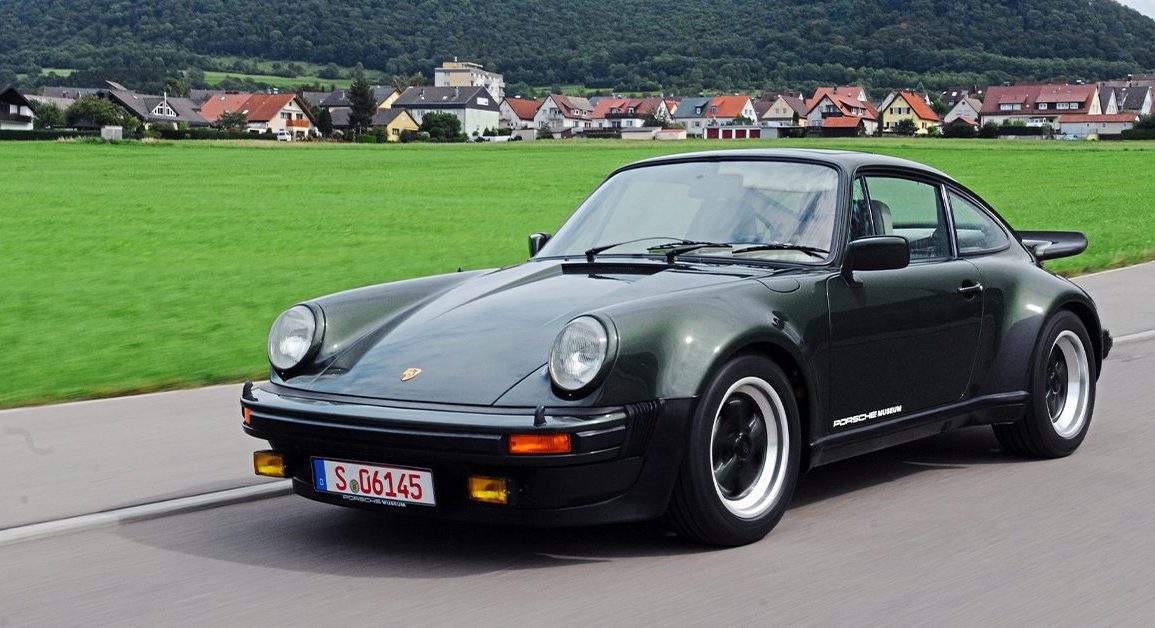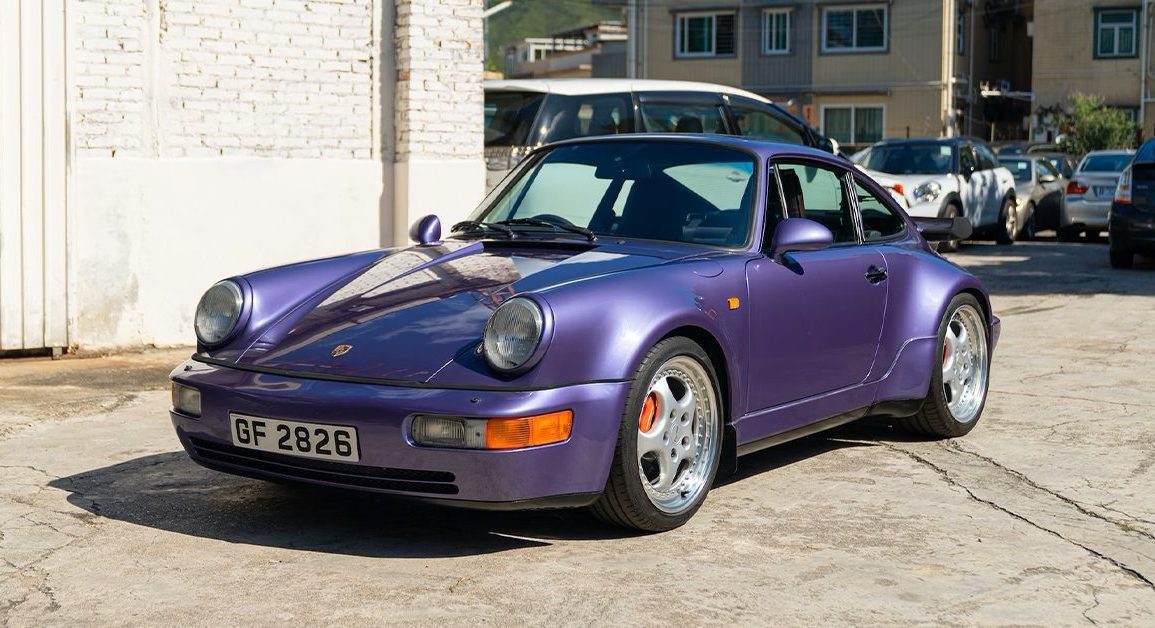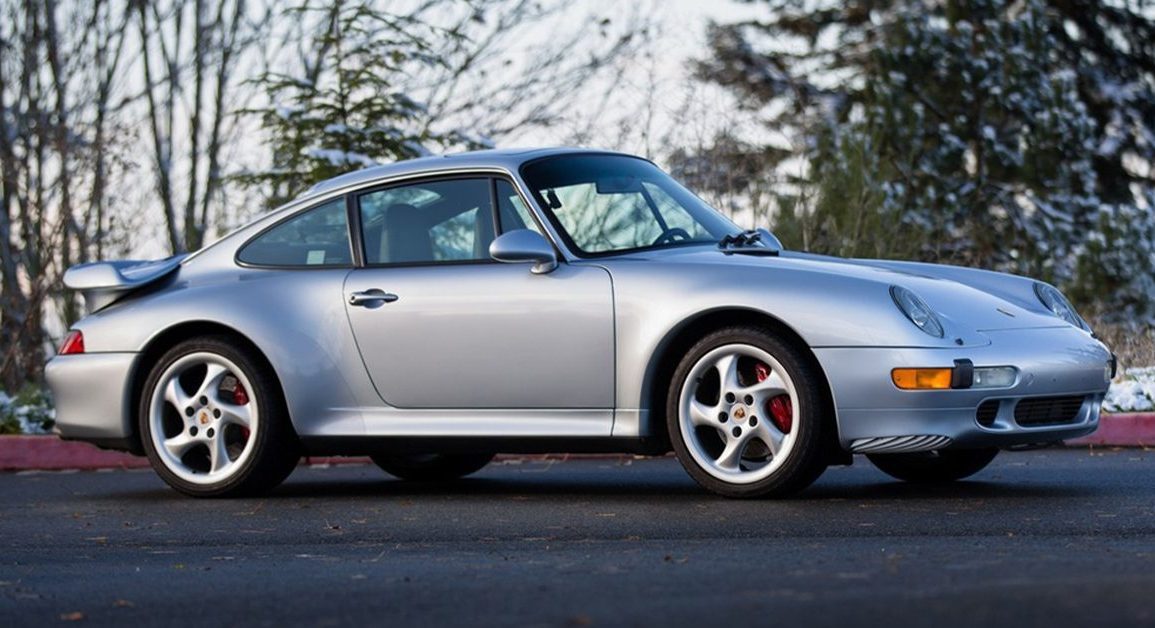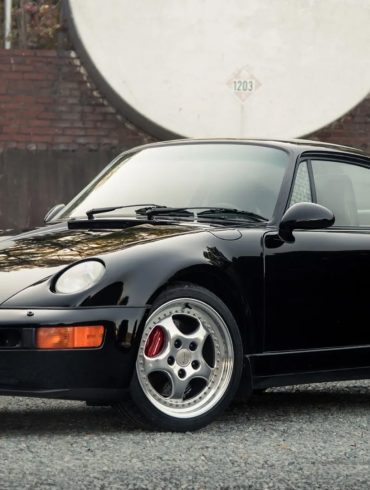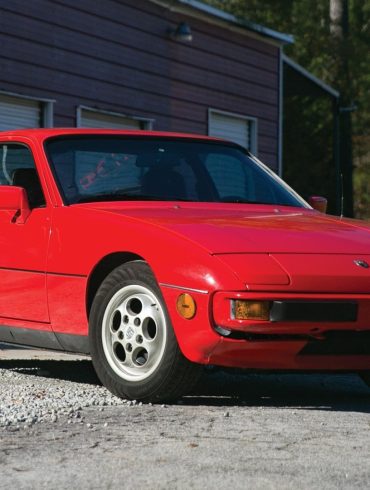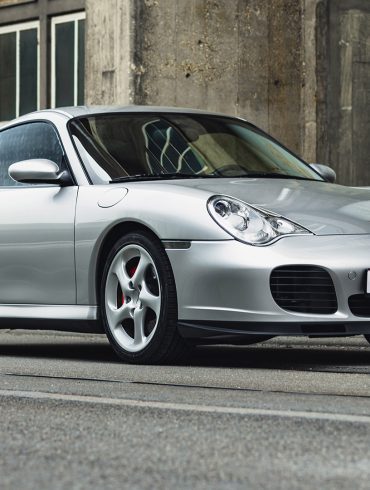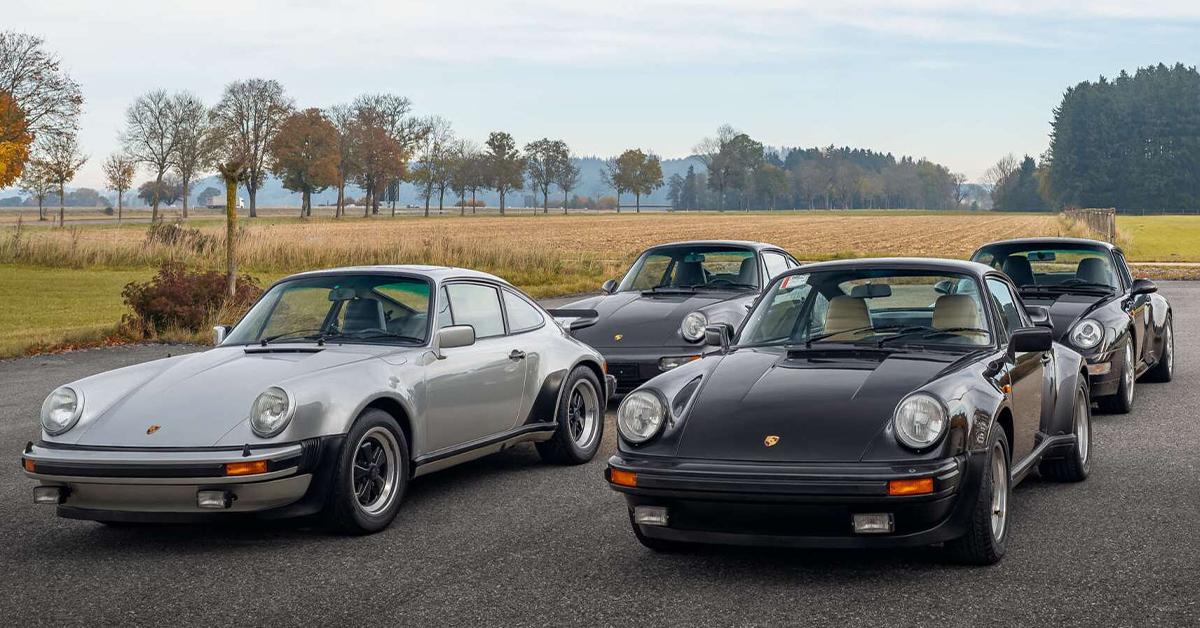
A showdown of the iconic 911 Turbo nameplate
About Our Selections
When discussing high-performance automobiles, few names are as instantly recognizable as the Porsche 911 Turbo. The 911 Turbo has earned a reputation in the automobile industry thanks to its impressive powertrain, iconic silhouette, and unique air-cooled howl. But among Porsche fans, the debate over which air-cooled Turbo model is the pinnacle of performance is ongoing.
In this article, we'll take a trip through history and innovation by contrasting the Porsche 911 Turbo 930, 964, and 993. Choosing the best legend is difficult because they all share a blend of tradition and novelty, so you'll be the judge. Follow us as we dissect the technical details of these air-cooled behemoths and delve into the heart of their quest for perfection.
1975-1977 Porsche 911 Turbo 3.0 (930)
The Widowmaker
Why We Picked It:
The 911 Turbo, a more potent variant of the Porsche 911, debuted for the 1975 model year. Since its release, the Porsche 911 Turbo (930) has been widely regarded as the best of the 911 lineage. One large turbocharger was attached to the 3.0-liter flat-six engine, churning out 260 horsepower at 5,500 rpm and 254 foot-pounds of torque at 4,000 rpm. The top speed was 155 mph, and it took 5.5 seconds to accelerate from 0 to 60 mph.
In a decade where vehicles were cumbersome, heavy, and sluggish, Porsche released a 2,635-pound car with a monster turbocharged engine in the back with insane turbo lag that turns into a power delivery with no middle ground, making it almost uncontrollable, earning the name the Widowmaker. Also, anti-lock brakes or traction control weren't a thing back then.
The 930 borrowed the dry-sump and single overhead camshaft layout from the 3.0 Carrera RSR from 1974. Pistons made of forged alloy and Nikasil barrels were also included. For supercharging the 930's 2994 cc engine, a KKK 3 LDZ turbo was used. The original pressure was 0.8 bar; in 1976, it was increased to 1.0 bar. The Turbo received a new, improved 4-speed manual transmission (Type 930/30)
Specifications:
Price: $100,000-$300,000
Engine: 3.0L Turbocharged Flat-Six
Power: 260 hp
Torque: 254 lb-ft
Transmission: 4-Speed Manual
Curb Weight: 2,635 lbs
Highlights:
Additional variants of the 930 Turbo included a 3.3 Turbo (1978–1989), a 911 Turbo 3.3 Targa (1978–1989), and a Cabriolet (1978–1989). Between the displacement increase and the addition of an intercooler, the 3.3 911 Turbo bumped up engine output to 300 hp.
Though initially only a handful of Turbos were intended, it's common knowledge that the 911 Turbo was not only a success but would become a legend in its own right.
Learn More:
The Variants
Porsche 911 Turbo 3.0 (930) (1975 – 1977)
The 911 Turbo was put into production in 1975. While the original purpose of the 911 Turbo was to gain homologation for the 1976 racing season, it quickly became popular among car enthusiasts. Ernst Fuhrmann adapted the turbo-technology originally developed for the 917/30 CAN-AM car and applied it to the 3.0 litre flat-six used in the Carrera RS 3.0, thus creating what Porsche internally dubbed as the 930. Total power output from the engine was 260 bhp and 254 ft lbs of torque.
Porsche 911 Turbo 3.3 (930) (1978 – 1989)
Porsche made its first and most significant changes to the 930 for 1978 model year, enlarging the engine bore by 2 mm (0.08 in) to a total displacement of 3,299 cc (3.3 L; 201.3 cu in) and adding an air-to-air intercooler. The suspension benefitted from new anti-roll bars, firmer shocks and larger diameter rear torsion bars. While the increase in displacement increased power output and torque, it also increased the weight of the vehicle, which contributed to a substantial change in the handling and character of the car compared to the Earlier 3.0-Litre Models.
1991-1992 Porsche 911 Turbo 3.3 (964)
An adventure tourer that is happy on the pavement, but can also get dirty if needed
Why We Picked It:
The Porsche 911 964 series debuted with the switch to the 1989–1990 model years. The original 911 lineup included the Coupe, Targa, and Convertible body styles. Porsche's flagship Turbo model has been part of this lineup since the 1991 model year.
The 911 Turbo (type 964) had a wider body with wheel wells positioned significantly farther away than the Carrera models. At the rear, its large spoiler was taken from the Turbo 3.3 model G, and its two oval exhaust outlets underlined its own character.
The left outlet only emitted exhaust gases when the turbocharger boost pressure regulating valve was open. In the 1991–92 model years, the 911 Turbo was powered by a 3.3-liter, 320-hp turbocharged engine. In 1993, Porsche fitted a beefier 3.6-liter engine that bumped the output to 362 horses. Among other elements, you can easily recognize this variant by its red brake calipers.
The Turbo S, with a 3.3-liter engine, made its debut in 1992. By increasing the size of the injectors, the amount of boost, and the stiffness of the camshafts, the regular turbo model generated 376 horsepower. Because of its aerodynamic design and few "creature comforts," the Turbo S was among the quickest cars available.
Specifications:
Price: $100,000-$200,000
Engine: 3.3L Turbocharged Flat-Six
Power: 320 hp
Torque: 347 lb-ft
Transmission: 5-Speed Manual / 4-Speed Automatic
Curb Weight: 3,274 lbs
Highlights:
For the 911 (964) Turbo, Porsche increased the power from the previous generation 911 (930) to 320 hp, and torque was up to 362 lb-ft. Stylewise, the 964 911 Turbo had a wider body with significantly more flared wheel housings than the 964 Carrera models.
For the 1993–1994 model year only, Porsche launched the 964 Turbo 3.6, which had a KKK K27 turbocharged version of the 3.6-liter M64 engine producing 355 hp and 384 lb-ft of torque.
Learn More:
The Variants
Porsche 911 Turbo 3.3 (964) (1991 – 1992)
The 1989/90 change of model year saw the launch of the Porsche 911, 964 series onto the market. This 911 model was initially available as a Coupe, Targa and Convertible. From model year 1991 onwards Porsche also introduced its top-of-the-line model - the Turbo - into this series. In spite of bearing a major similarity in terms of look to the naturally-aspirated model, the extended wings remained. This meant that the new Porsche could retain its turbo look. The 964 Turbo model was the successor to the Porsche 930. The 964 Turbo was the end of an era, the last of the single turbo rear-wheel drive 911 Turbos.
Porsche 911 Turbo S 3.3 (964) (1992 – 1993)
Porsche made a lightweight version of the Turbo simply known as the Tuubo S. This used the spartan appointments of the Carrera RS with an upgraded version of the Turbo engine. Some cars received graphics on the side celebrating IMSA Supercar Championship. Similar to the Carrera RS, the Turbo S had no power steering, air conditioning, airbags, central locking, alarm system, rear window wiper, smaller window washer reservoir, smaller horn, and had thin-gauge glass. The engine used a second oil cooler and slightly higher boost to improve overall performance.
Porsche 911 Turbo 3.6 (964) (1993 – 1994)
Engine based on modified 3.6 litre 964 unit. Speedline wheels with big red brake calipers. Lessons learned in the Carrera Cup series proved the reliability of the new 3.6-litre engine. An additional three millimetres on the bore and two millimetres on the stroke, resulted in an increase in capacity of 300 cc. Combined with the turbo optimised cylinders, pistons and crank train, and an increase in the compression ratio from 7.0 to 7.5:1, this helped to boost power to 360 bhp. Torque was increased significantly to 520 Nm at 4200 rpm, up from 450 Nm at 4500 rpm in the earlier car.
Porsche 911 Turbo 3.6 S (964) (1994)
19 non 'slant nose' or Package cars were made for the USA only. Very rare. The Porsche factory had 93 Turbo chassis left. These were all transferred to Porsche Exclusiv and hand built as the very special 964 Turbo 3.6 S. They were offered with normal, or ‘Flachbau’ slant nose front ends. While the vast majority of Turbo S’ were fitted with the ‘Flachbau’ nose as a no-cost option, the Turbo S could also be had with the traditional 964 nose as well. In all, 76 Flatnose cars were made while 17 non-Flatnose (known as Package option) cars were made. These cars were also fitted with the X88 option, which increased power to 380 hp.
Porsche 911 Turbo 3.6 S “Flatnose” (964) (1994)
The Porsche factory had 93 Turbo chassis left. These were all transferred to Porsche Exclusiv and hand built as the very special 964 Turbo 3.6 S. They were offered with normal, or ‘Flachbau’ slant nose front ends. While the vast majority of Turbo S’ were fitted with the ‘Flachbau’ nose as a no-cost option, the Turbo S could also be had with the traditional 964 nose as well. In all, 76 Flatnose cars were made while 17 non-Flatnose (known as Package option) cars were made. These cars were also fitted with the X88 option, which increased power to 380 hp. 75 flatnose units were produced.
Porsche 911 Turbo S2 (964) (1992)
A forgotten part of the 964s history is the Turbo S2. It was built to adhere to homologation rules so Porsche could participate in IMSA's sports car racing series. IMSA's homologation rules meant that Porsche had to build at least 200 road-going versions of the participating car, 20 of which needed to share most of the primary components of the race car. The 911 Turbo S2 was built specifically for this purpose and exclusively for the United States and Canada. The 20 homologation specials left the factory as stock 964 Turbos, heading immediately to California-based tuner for "S2" engine upgrades.
Porsche 911 Turbo Cabriolet (964) (1993)
The Turbo-look Porsche 964 has always been a very desirable automobile, among them 1,532 Carrera 2 Cabriolets constructed worldwide. Within that group, there were some cars that were even more specialized. The Register says six Turbo-look cabriolets were pulled off the production line in Zuffenhausen and transported to the Porsche Exclusive shop in Weissach. Three of these six powerful and luxuriously equipped drop-tops were equipped with left-hand drive for buyers in Germany (Code C00), and the other three were fitted with right-hand drive.
1995-1998 Porsche 911 Turbo 3.6 (993)
The end of an era
Why We Picked It:
For the first time in the 911 series, the 911 Turbo had a twin-turbocharged engine with the introduction of the 993 in 1995. Now, each cylinder bank had its own turbocharger. All-wheel drive also debuted in a 911 Turbo variant.
There were three separate vents on the front of the Turbo, plus another vent slot on the lower side for cooling the brakes. The back spoiler matched the rest of the car in color. The 911 Turbo, like the Carrera 4, featured white front and red rear turn signals.
From late 1995 until 1998, you could purchase a 993 Turbo. It had 402 horsepower thanks to its twin-turbocharged 3.6-liter flat-six engine. Power was increased to 430 horsepower beginning with the 1996 model year and then to 450 hp starting with the 1998 model year. In 1995, Porsche made only 14 versions of the 911 Cabriolet Turbo with a massive rear spoiler as a special edition.
The 993 turbo is easily recognized from behind because of its thick whale-tail spoiler, which conceals intercoolers used to cool the intake charge. The 993 Carrera 4's all-wheel drive helped tame the beast of an engine and keep it planted on the road. About six thousand coupes were manufactured.
Specifications:
Price: $200,000-$300,000
Engine: 3.6L Twin-Turbocharged Flat-Six
Power: 402 hp
Torque: 395 lb-ft
Transmission: 6-Speed Manual
Curb Weight: 3,274 lbs
Highlights:
The 993 was the last of the air-cooled 911 turbos. Porsche introduced the Turbo for the 1995 model year with a 408-hp 3.6-liter engine paired with two K16 turbochargers.
The 993 was the first 911 Turbo with all-wheel drive, sourced in-house from the Porsche 959. Air-to-air intercoolers, electronic engine management, redesigned cylinder heads, and other modified components completed the new engine.
Learn More:
The Variants
Porsche 911 Turbo (993) (1995 – 1998)
The 993 Turbo was available between late 1995 to 1998. Powered by a twin-turbocharged 3.6 liter flat six, it was rated at 402-horsepower. It’s distinguished easily from the rear, as the whale-tail spoiler is quite deep to house the intercoolers meant to cool the intake charge. This extra power might have been a handful for street drivers, so all-wheel drive from the 993 Carrera 4 added traction at all four corners. Approximately 6,000 coupes were made. Although powered by a different engine, a limited production 993 Turbo Cabriolet was available in the early days of the 993 generation. A more powerful 993 Turbo S was also introduced in 1997.
Porsche 911 Turbo S (993) (1997 – 1998)
The 993 Turbo S, available between 1997 and 1998, bumped the power from the standard 993 Turbo up to 450hp (430 for the United States market) with larger turbochargers and a modified engine management system. The Turbo S was fitted with more luxury trim bits on the interior – with more leather and carbon fiber than on the standard Turbo. A larger rear wing was installed as well. Only 345 were built. Its direct successor was the 996 Turbo S for model year 2005.


